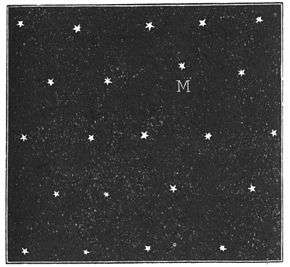Epitome Astronomiae Copernicanae


The Epitome Astronomiae Copernicanae was an influential astronomy book on the heliocentric system published by Johannes Kepler in the period 1617 to 1621. The first volume (books I–III) was printed in 1617, the second (book IV) in 1620, and the third (books V–VII) in 1621.
Content
The book contained in particular the first version in print of his third law of planetary motion. The work was intended as a textbook, and the first part was written by 1615.[1] Divided into seven books, the Epitome covers much of Kepler's earlier thinking, as well as his later positions on physics, metaphysics and archetypes.[2] In Book IV he supported the Copernican cosmology.[3] Book V provided mathematics underpinning Kepler's views.[2] Kepler wrote and published this work in parallel with his Harmonices Mundi (1619), the last Books V to VII appearing in 1621.[4]
The term "inertia" was first introduced in the Epitome.[5]
The work was banned by the Catholic Church as heretical.
Editions
- 1635 reprint: Epitome Astronomiae Copernicanae, Vols. 1–3, Schönwetterus.
Translations
- 1939: Epitome of Copernican astronomy. Books IV and V, The organization of the world and the doctrine ...; trans. by Charles Glenn Wallis. Annapolis: St John's Bookstore.
- --ditto.--reissued with Ptolemy's Almagest. Chicago: Encyclopædia Britannica (1955).
- 1995: Epitome of Copernican astronomy; & Harmonies of the world; translated by Charles Glenn Wallis. Amherst: Prometheus Books.
Notes
- ↑ Max Caspar (10 October 2012). Kepler. Courier Dover Publications. p. 239. ISBN 978-0-486-15175-5.
- 1 2 Rhonda Martens (29 October 2000). Kepler's Philosophy and the New Astronomy. Princeton University Press. p. 142. ISBN 0-691-05069-4.
- ↑ Roy Porter; Katharine Park; Lorraine Daston (3 July 2006). The Cambridge History of Science: Volume 3, Early Modern Science. Cambridge University Press. p. 41. ISBN 978-0-521-57244-6.
- ↑ J. R. Mulryne (1 January 2004). Europa Triumphans: Court and Civic Festivals in Early Modern Europe. Ashgate Publishing, Ltd. p. 12. ISBN 978-0-7546-3873-5.
- ↑ Lawrence Nolan (ed.), The Cambridge Descartes Lexicon, Cambridge University Press, 2016, "Inertia."